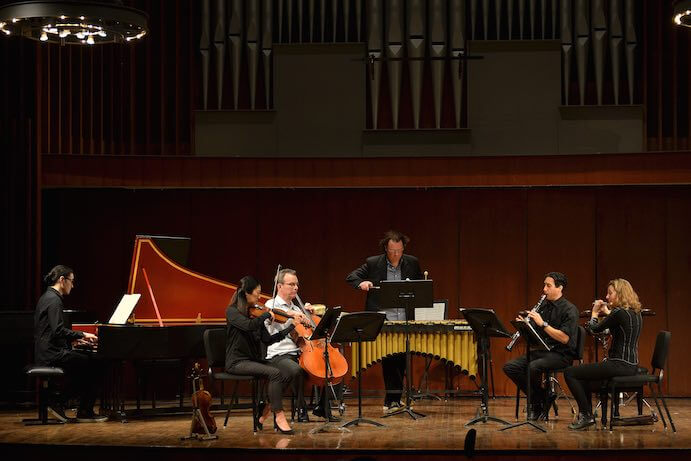From January 16-20, 2019, the sixth annual 21C Music Festival found Toronto in the grip of an extreme cold snap. While introducing New York’s Sō Percussion, The Royal Conservatory’s Mervon Mehta quipped, “We’re renaming the festival minus 21C.” The joke probably makes more sense to Canadians, who measure our temperature in Celsius, but the “minus” was lost on no one.
The theme of this year’s festival was celebrating composer Terry Riley, with his music being performed in three of the eight concerts. Riley, who will be 84 in June, performed in one concert alongside his son, composer-guitarist Gyan Riley, and electric violinist Tracy Silverman. The elder icon of American minimalist was also in attendance at the Sō concert, seemingly ever genial and approachable in the lobby.
The opening concert on January 16 saw the 21C debut of the Toronto Symphony Orchestra, conducted by Tania Miller and featuring music by six composers, including Riley along Canadians Dorothy Chang, Dinuk Wijeratne, Jocelyn Morlock, Emilie LeBel, and composer-pianist Stewart Goodyear, who premiered his piano concerto Ur-.
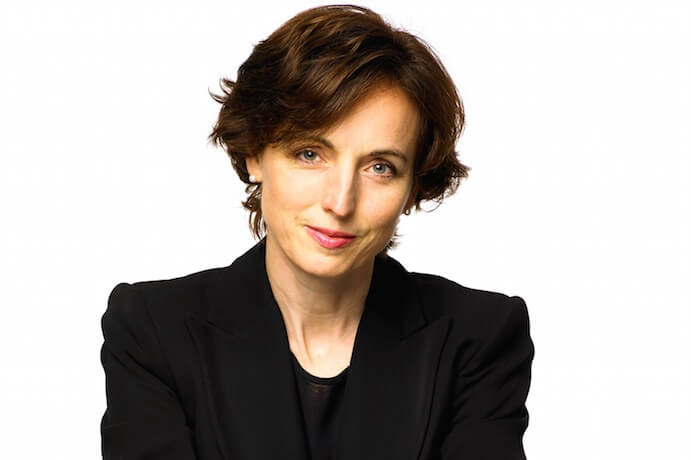
Tania Miller
Miller brought a fluid precision to Riley’s “Half-Wolf Dances Mad in Moonlight” from the string quartet cycle Salome Dances for Peace (1985), heard in an arrangement for string orchestra. The ensemble held firm through rhythmic and metric complexity originally conceived for only four performers. At times, the resulting impression was that of a mid-century European work.
Chang’s “Northern Star” was one of two pieces heard from True North: Symphonic Ballet (2017), a Canada 150 commission involving six composers. It begins in quietude with dark hued, low-register sounds evoking the ravages of war, and grows to a hopeful sunburst with spectral chords in the Lydian dominant mode. The other piece from True North was Wijeratne’s “First Winter,” a tone poem that attempts to represent the experience of the first humans arriving in what is now Canada; which the composer feels is “allegorical of the immigrant experience.” This is a trope that serves to erase the Indigenous identity and presence of this land, and the music’s heroic sweep didn’t do much to suggest the “first humans” were anyone but Europeans.
Morlock’s Nostalgia (2007, rev. 2012) used the Adagio from Bach’s Sonata for Viola da Gamba and Harpsichord as a starting point, seeding it with material from the original that is only briefly audible. It is expertly shaped, long-lined music with canons, trills, and slow, bird-like calls bathed in warm consonances. It was full of motion, and yet not driven by tempo.
LeBel’s They do not shimmer like the dry grasses on the hills, or the leaves on the trees received its world premiere, and was a contemplation of the vast North American landscapes the composer traversed. It takes a complex approach to shading through pitch, timbre and unpitched percussion, and more than any other work on the program, was a piece about light itself. There was shimmering detail, a drone that was often a subtle thread, a near sense of monody; all with an effortless flow. A harmonica played by one of the percussionists blended well with the orchestra and provided a striking color.
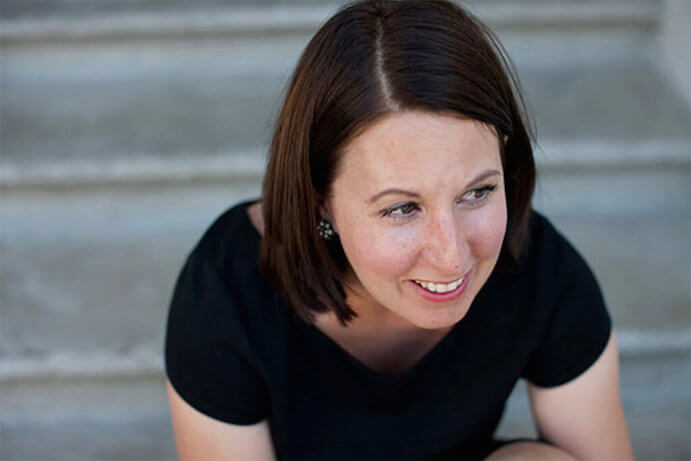
Emilie LeBel–Photo by Phillipa C Photography
Goodyear’s Ur- was inspired Anton Webern’s Symphony, op. 21 and Goethe’s The Metamorphosis of Plants, and in some ways mirrors the structuralist ambitions of serialist composers. The chords and in medias res entry of the opening movement recall Messiaen. It later has a motoric quality, in which the orchestra didn’t always fit organically with the vibrant piano part. The final movement is the most successful of the three, with rapid-fire, repeating asymmetrical interjections from the orchestra and piano together. It could’ve sounded severe but was playful. Goodyear’s astonishing technique was on full display, especially in staggering single-note trills.
Miller’s audience engagement between pieces was exemplary. In addition to being a stellar conductor, she understands how important verbal communication can be for audiences unfamiliar with new repertoire.
“Terry Riley: Live at 85!” (January 18) was a misnomer by a year or so given his actual age. Judging by the energy of his performance, the prediction of his good health in 2020 was not unreasonable. The concert opened with Tracy Silverman playing a solo set with electric violin and loop pedal that featured excerpts of Riley’s longer works. The way Silverman produced a wide variety of sounds and layered them upon one another was satisfying, and in places, it recalled Riley’s vivid organ and tape echo pieces of the 1960s. The second half of the program focused on the Rileys as a duo, with Silverman joining them towards the end. With two decades experience as an improvising ensemble, their rapport loomed large, the buoyancy of their set validating what Silverman revealed in the pre-concert talk: “We’re totally unprepared, with [only] one or two lines of music in front of us for each piece. We follow each other’s muses around until we’re done.”
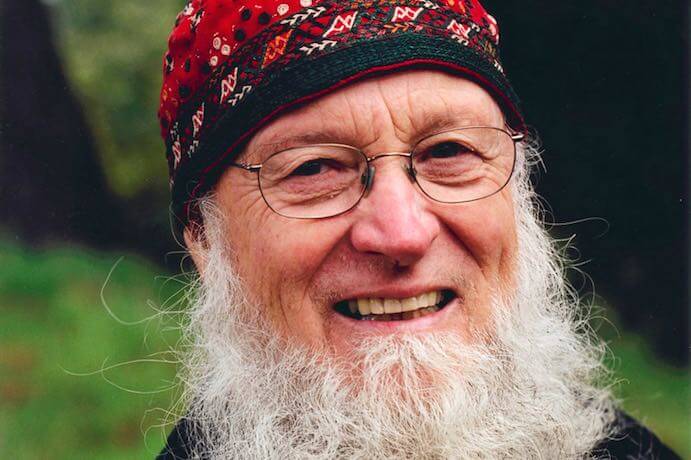
Terry Riley
It was a delight to watch Riley Sr. demonstrate the kind of post-genre explorations he has always engaged in. He turned from agile, rhythmically locked modal runs on grand piano to melodica, to loops on sampler, then a tablet with an audio app on which he produced some very out there textures. That he was doing all this at 83 is a reminder to dispense with ageism. The only real evidence of his age was when he sang ragas in the Indian classical tradition in a gravelly tenor.
“AfterHours,” with Continuum Contemporary Music and featured soloist Wesley Shen on harpsichord and piano, took place in Mazzoleni Hall immediately after the Riley concert. The program consisted of impeccably played, adventurous works that were well-curated and always fascinating. Depending on one’s perspective and energy level, it was either a hard sell following the Rileys’ groove-oriented, non-notated jamming, or the perfect nightcap. Cassandra Miller’s Overture (2010) found the ensemble alternating between playing full-bore, non-tonal blasts and quieter quasi-tonal gestures, cued by single notes on triangle. Titled after a decorating pattern from 18th century Versailles, Monica Pearce’s toile de jouy (2018) is a gripping new work for double manual harpsichord, which was a suitable showcase for Shen. It explores detail and register with extended sonorities in a constantly moving texture. In Sarabande (2010) by Linda Catlin Smith, hierarchical distinctions between consonance and dissonance, counterpoint and homophony, gestural and static music are deemphasized in order to savor very fine gradations of light and shadow.
Shen performed two of Unsuk Chin’s legendarily difficult Piano Etudes (1994), with clear control of the simultaneous dynamics and textures. The fierce technique required was on full display, but did not overshadow the subtleties and expressive beauty of the composition. In Carolyn Chen’s ache bind blind break (2012), “something throbs like a headache that won’t go away.” This was sometimes literally depicted with smashing high-register piano chords that were repeated until the sound appeared to fall away into its component elements. There were other colors to contrast this, including bass flute, and pauses for sounds to be fully appreciated.
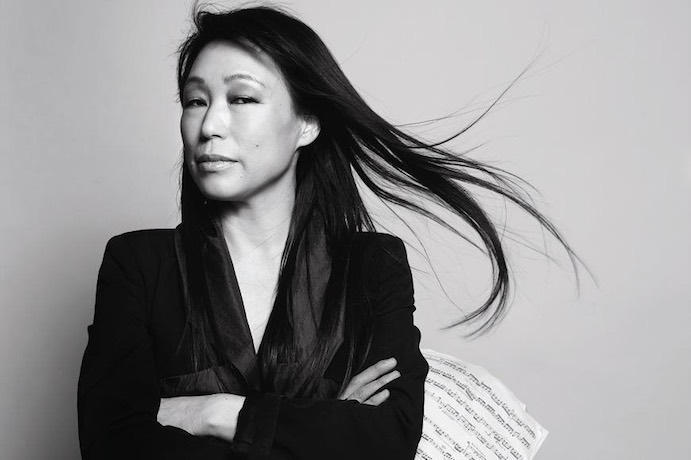
Unsuk Chin
Kati Agócs’ Immutable Dreams (2007) is varied in its sources and influences, invoking Schoenberg and Ligeti in its accompanying text, and Claude Vivier in passages of its opening movement. There are abstract, dense textures that coalesce around a tonal, elegiac finale written in memory of a friend. Shen’s piano had a concerto-like presence throughout the piece, and his highlighted role in the entire program was deservedly lauded with a solo curtain call.
Sō Percussion’s program (January 19) was subtitled with a reference to founder Jason Treuting’s multi-part composition Amid the Noise (2006). The work received its Canadian premiere, and also the premiere of a shorter version that included brass quintet. Sō’s quartet was supported by this additional group plus seven percussionists and one vocalist from the 21C Ensemble, who themselves are students at the University of Toronto and the Glenn Gould School. This performance was meant to be a salute to Riley, by way of a selection that was similar to his In C in terms of the communal music-making aspect. Seven short pieces were heard, each one based around a kind of groove ritual among the players, with harmonies derived from pop, bursting with exuberance towards the end.
Three other Canadian premieres were given. Caroline Shaw’s Taxidermy (2012) was revelatory, beginning with a quartet of clay flower pots played in visually symmetrical choreography, which was emblematic of the work’s humour and unforced, exploratory quality. Vijay Iyer’s intricately constructed TORQUE (2018) featured a gorgeous, hushed chorale for marimba, with all four players on one instrument. As with the Iyer, Donnacha Dennehy’s Broken Unison (2017) had a Reichian scoring and sound, though again going well beyond Reich in its development, with a deceptive sense of abandon.

Vijay Iyer (photo by Lena Adasheva)
The 21C Music Festival was an exceptional success, with programming that ranged from accessible to rigorous. Koerner Hall continues to be Toronto’s best sounding music venue. There was greater representation of women and people of colour in the lineup over prior years, while there is room for more growth in terms of inclusivity. Moving the festival to January instead of May proved useful in enabling students to participate. The performances were best in class; I left each concert on a high.


